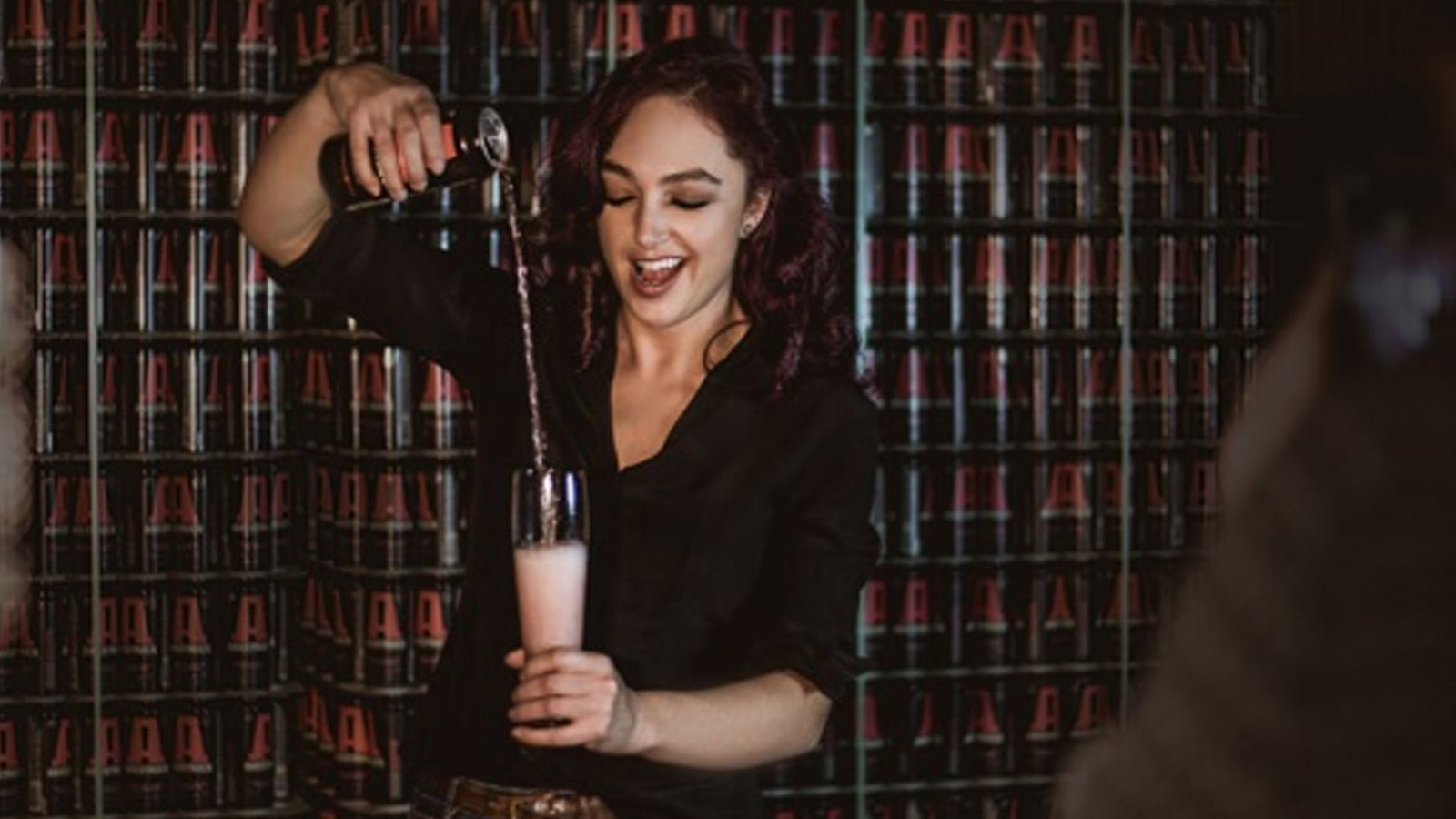In this episode of Uncorked, Polly Hammond sits down with Patricia Wilcox, co-founder of Awestruck Ciders and current candidate in the Erasmus Mundus Master on Wine Tourism Innovation. Patricia recently turned heads with a recent article in which she pulled back the curtain on wine’s obsession with perfect social media and the hidden costs behind those pristine barrel rooms and glossy Insta-feeds.
From cider entrepreneur to wine tourism researcher, Patricia brings a unique lens to the conversation—one that calls into question the value of beauty for beauty’s sake, especially when small producers are struggling to keep up.
A Real Look Behind the Barrel Room
Patricia’s journey into wine began in New York, where she and her husband founded Awestruck Ciders. But it was her move into academia—joining a program that spans Spain, France, Portugal, and beyond—that gave her a broader perspective on how the wine world presents itself, and what that performance is costing us.
During the show, Polly and Patricia talk about her eye-opening visits to over 70 wineries across Europe. What stood out? The increasing pressure for wineries to look the part, even if it means building faux barrel rooms, hosing down concrete floors before a photo op, or spending countless unpaid hours polishing a brand’s social media presence.
“Wineries aren’t doing anything wrong,” Patricia says. “They’re simply responding to what consumers have been conditioned to expect.” But that expectation, she argues, often comes at the expense of authenticity, storytelling, and the wine itself.
Authenticity vs. Aspirational Marketing
This episode dives deep into a question many wine marketers wrestle with: are we chasing authenticity, or just an aesthetic?
Patricia is clear—aspirational content isn’t inherently bad. There’s nothing wrong with wineries looking polished, and there’s nothing wrong with consumers wanting to wear their nice shoes for a day in wine country. But she challenges brands and visitors alike to think more critically about what we’re glorifying.
“I’m not saying don’t have beautiful spaces,” she clarifies. “But recognize that some of the most meaningful, most educational, most memorable experiences come from the places you’d never see on Instagram.”
The key takeaway? Be intentional. If you’re going to invest in a tourism program—or social media content—make sure it reflects who you actually are, not what someone else looks like online.
Social Media Isn’t a Sales Strategy
Patricia’s article hit a nerve for many in the wine industry, especially those who pour enormous time and money into organic social media. Polly shares a sentiment heard across the 5forests client base: organic content rarely delivers meaningful ROI. It’s expensive, labor-intensive, and, for most independent producers, it doesn’t move wine.
Patricia agrees. “A lot of wineries are doing this because they think they have to,” she says. “But if it’s not aligned with your resources or your values, it’s time to rethink the plan.”
Instead, she encourages brands to focus on storytelling through customer experience. “Make it unforgettable. That’s what people will share. That’s what builds your reputation.”
What Consumers Actually Want
One of the strongest points in this conversation is the shift in what different generations expect from wine tourism.
Older audiences may still value polish and luxury. But younger visitors—Millennials and Gen Z—are increasingly drawn to something that feels real. They want to meet the winemaker. They want muddy boots and fifth-generation farmers. They want to feel like they’ve found something personal, not staged.
And they want it on their own terms.
That means wine tourism needs to diversify. Yes, there’s a place for the gleaming tasting room, but there’s also a place for GPS-guided wine hikes, cellar-door conversations, and tours led by the winemaker who still doesn’t know how to use Zoom.
“The most powerful thing we can do is help consumers know that those experiences exist,” Patricia says. “They may not be in your feed. But they’re out there—and they’re worth finding.”
Key Takeaways from Polly and Patricia’s Conversation
- Stop trying to copy perfection: Don’t waste your limited time and budget replicating glossy big-brand content. Focus instead on what makes you different.
- Wine tourism is about more than aesthetics: The best visits are the most human. Build experiences that offer emotion, context, and storytelling—not just set dressing.
- Redefine your digital expectations: If you’re relying on organic social to sell wine, reconsider. Focus instead on channels with proven ROI, like email, content marketing, and partnerships.
- Trust in what makes your brand real: Whether it’s messy, muddy, or off-the-beaten-path, there’s power in showing people the truth of your craft.
- Consumers want choice: Not every visitor wants the polished tour. Make space in your offer for the curious, the culturally engaged, and the next-gen wine lovers.
As Polly sums it up, “If we want to stop the sameness, we need to stop chasing sameness. That starts with giving people stories that matter.”
